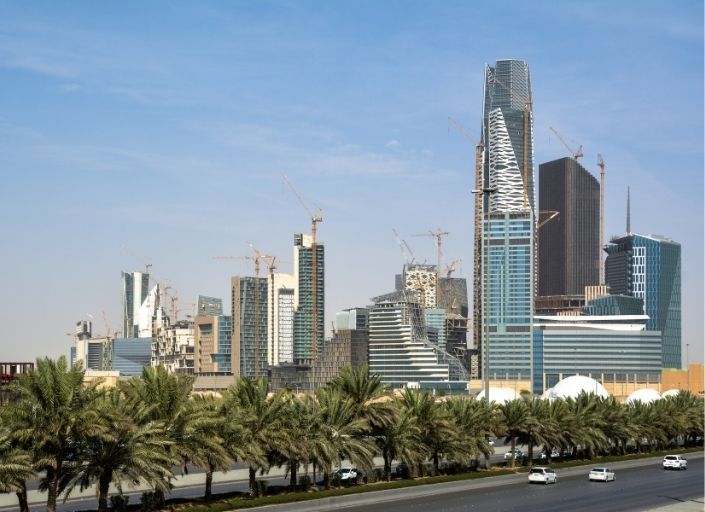As tens of thousands of Egyptians continue heading to Saudi Arabia for work each year, their immigration experiences reflect a broader geo-economic dynamic shaping the Middle East today. While the move offers financial opportunity for many, it also brings challenges shaped by changing labour policies and legal frameworks.
Since the 1970s, Saudi Arabia has remained the primary regional destination for Egyptian labour migration, especially following the oil boom. A 2024 study in Comparative Migration Studies showed that Egypt has been sending a larger number of older, work-experienced migrants to Saudi Arabia than to Kuwait or Libya; two other oil-rich nations that also became major destinations for Egyptian migrants following the oil boom.
These migrants often rely on earnings to support families back home.
In April 2025, the Central Bank of Egypt reported that remittances from Egyptians abroad reached approximately USD 3 billion (EGP 143.5 billion), a 39 percent increase compared to April 2024, following Egypt’s decision to float its currency in March. Gulf countries, led by Saudi Arabia, played a central role in financing this inflow.
According to the World Bank, Egypt received approximately USD 19.5 billion (EGP 932.3 billion) in remittances in 2023, which is roughly five percent of its gross domestic product (GDP). The Gulf contributed more than 40 percent of this total.
Yet, beyond remittances, Saudization—a labour policy requiring private-sector employers to hire more Saudi citizens—has increasingly shaped migrants’ reality.
Rana Mohamed, 36, shared her experience as an Egyptian working in Riyadh’s private education sector.
“I had been working in Saudi Arabia for four years, but after the Saudization policy expanded to cover more jobs, my contract was not renewed. I had no choice but to return to Cairo,” she told Egyptian Streets.
Her story mirrors trends noted in a 2020 policy brief by Fair Square, which found that foreign professionals in education, sales, and administration were among the first to feel the effects of tightened labour nationalisation quotas in Saudi Arabia.
Introduced in 2011 by the Ministry of Human Resources and Social Development, the initiative was designed to increase Saudi participation in the private sector. It requires private-sector firms to employ a defined percentage of Saudi nationals, with quotas varying by company size and industry. Businesses are classified into tiers: Platinum, High Green, Low Green, Yellow, and Red. This classification is based on their compliance, with non-compliant firms facing restrictions such as reduced ability to hire foreign workers or secure government contracts.
Formally known as the Nitaqat programme, the Saudization policy continues to evolve. Under Vision 2030, the policy has been expanded to include a growing number of professions, including pharmacy, law, dentistry, translation, and private education, with updated nationalisation quotas and tighter enforcement measures.
According to a 2024 report by the Migration Policy Institute, periodic adjustments to quotas have caused fluctuations in foreign-worker permits and led to job losses among expatriates in sectors like retail, education, and administration.
Saudization, however, is not the sole factor influencing migrants’ decisions to relocate.
Consider the case of Karim Hassan, 40, an Egyptian IT specialist who first worked in Dubai for three years starting in 2019 before relocating to Jeddah in 2023.
“I loved the work in the UAE, but the living costs were just too high, especially rent. I could barely save anything,” he said. “In Saudi Arabia, even though life is more conservative, I managed to save much more, and that helped me plan for my family back home.”
While Saudi Arabia continues to attract Egyptian migrants with competitive salaries and benefits, many face structural challenges under the country’s labour framework.
The kafala (sponsorship) system, which remains partially in effect, links a worker’s legal residency to their employer, limiting the ability to change jobs or leave the country without consent. According to the International Labour Organization, this dependency often results in power imbalances that increase the risk of wage withholding and exploitation.
Although Saudi Arabia introduced labour mobility reforms in 2021 under Vision 2030, including allowing some workers to transfer jobs without employer approval, ILO assessments suggest that gaps remain in enforcement and that the reforms exclude certain sectors like domestic work.
Despite these challenges, Saudi Arabia continues to attract skilled professionals, particularly in sectors such as healthcare, education, and construction. A 2023 clinical study published in PubMed noted that healthcare workers were often offered contracts that included flights, accommodation, and family benefits, perks rarely found in Egypt’s public sector.
For many migrants, however, the benefits still outweigh the risks.
Mahmoud Saeed, 52, a construction engineer from Mansoura, summed it his experience poignantly by saying, “The money I earned in Saudi helped me buy land back home and provide a good quality of life for my family. However, I would not wish the experience on my son. It was not an easy life.”
As Egypt and Saudi Arabia strengthen economic ties, migration between the two nations is likely to continue.
While many Egyptians find financial opportunity in the kingdom, policies like Saudization and the kafala system still pose challenges. Ensuring fair treatment and lasting benefits for workers will be key to making this movement sustainable for both countries.







Comments (0)